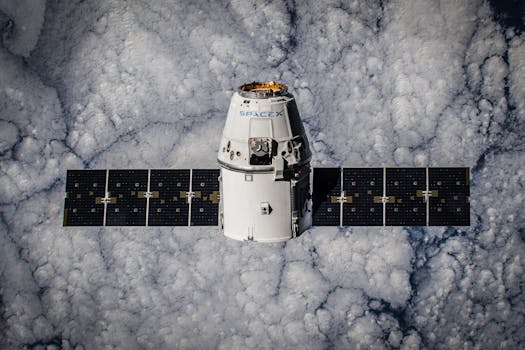
The New Frontier: Exploring the Latest Trends in Satellite Communication
Satellite communication is the new frontier in the world of telecommunications, and it is revolutionizing the way we connect and communicate. With the increasing demand for global connectivity, satellite communication is playing a vital role in providing wireless network services to remote and underserved areas. The latest trends in satellite communication are focused on providing high-speed, low-latency, and secure communication services, and are being driven by advancements in technology and innovation.
One of the latest trends in satellite communication is the use of Low Earth Orbit (LEO) satellites. LEO satellites are a new generation of satellites that operate at an altitude of around 1,200 kilometers, which is much lower than traditional geostationary satellites. This lower altitude enables LEO satellites to provide faster and more secure communication services, with lower latency and higher throughput. Companies such as OneWeb and Starlink are leading the charge in the development of LEO satellites, and are planning to launch thousands of satellites in the coming years to provide global coverage.
Advancements in Satellite Technology
Another trend in satellite communication is the use of advanced technologies such as phased array antennas and high-throughput satellites (HTS). Phased array antennas are a type of antenna that uses multiple small antennas to steer and shape the beam, enabling faster and more efficient communication. HTS are a type of satellite that uses a combination of broad frequency bands and multiple beams to provide high-throughput communication services. These technologies are enabling satellite communication providers to offer faster and more secure services, and are being used in a variety of applications, including broadband internet, mobile networks, and IoT connectivity.
The use of artificial intelligence (AI) and machine learning (ML) algorithms is also becoming increasingly popular in satellite communication. AI and ML algorithms are being used to optimize satellite communication systems, predict and prevent outages, and improve the overall performance of satellite networks. For example, AI-powered predictive maintenance can help identify potential issues before they occur, reducing downtime and improving the overall reliability of satellite communication systems.
Applications of Satellite Communication
Satellite communication has a wide range of applications, including broadband internet, mobile networks, IoT connectivity, and emergency response. Satellite communication is particularly useful in remote and underserved areas, where traditional communication infrastructure is limited or non-existent. For example, satellite communication can provide connectivity to rural areas, enabling people to access the internet, make phone calls, and send messages. Satellite communication can also provide critical communication services during natural disasters, such as hurricanes, wildfires, and earthquakes, when traditional communication infrastructure is damaged or destroyed.
In addition to these applications, satellite communication is also being used in a variety of industrial and commercial applications, such as maritime communication, aviation communication, and land mobility. For example, satellite communication can provide connectivity to ships and vessels at sea, enabling them to stay in touch with shore-based facilities and receive critical weather and navigation information. Satellite communication can also provide connectivity to aircraft, enabling them to stay in touch with air traffic control and receive critical navigation and weather information.
Conclusion
In conclusion, the latest trends in satellite communication are revolutionizing the way we connect and communicate. With advancements in technology and innovation, satellite communication is becoming faster, more secure, and more reliable. The use of LEO satellites, phased array antennas, and HTS is enabling satellite communication providers to offer high-speed, low-latency, and secure communication services. The applications of satellite communication are diverse and widespread, and include broadband internet, mobile networks, IoT connectivity, and emergency response. As the demand for global connectivity continues to grow, satellite communication is likely to play an increasingly important role in the world of telecommunications.






